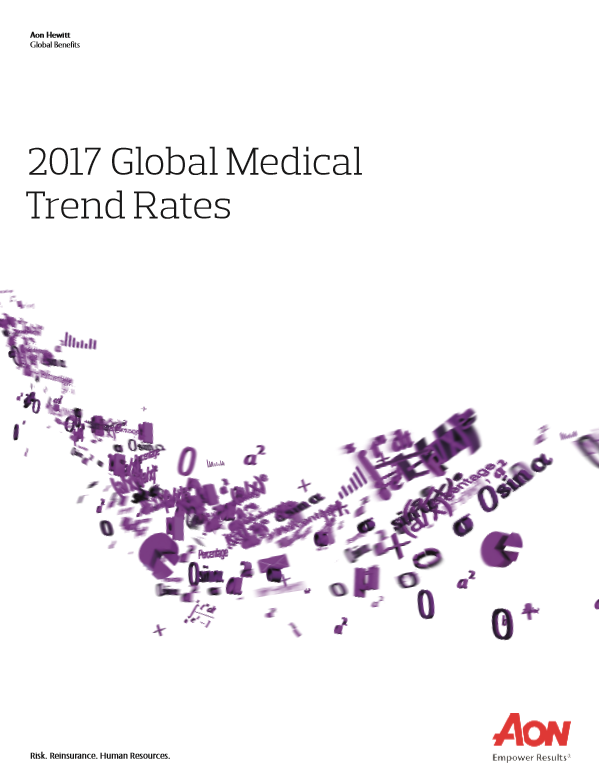Report: Aon Global Medical Trend Rates
Key findings:
- The prevalence of employer-sponsored medical plans is increasing. Furthermore, the scope of the provisions offered by these medical plans is expanding (ie larger maximum lifetime benefits, larger allowances for maternity benefits, fewer exclusions, more procedures covered by the plan).
- For 2017, the global average medical trend rate of 8.2% was 5.4 percentage points higher than the average inflation rate of 2.8%. In 2016, the global average medical trend rate of 8.1% was 5.2 percentage points higher than the average inflation rate of 2.9%.
- Aon Hewitt expects further medical cost escalation due to global population ageing, overall declining health, poor lifestyle habits becoming pervasive in emerging countries, continuing cost shifting from social programmes, and increasing utilisation of employer-sponsored plans.
The trend rate figures represent the percentage increases in medical plan (insured and self-insured) unit costs that are anticipated to be technically required to address projected price inflation, technology advances in the medical field, plan utilisation patterns, and cost shifting from social programmes in each country covered.







